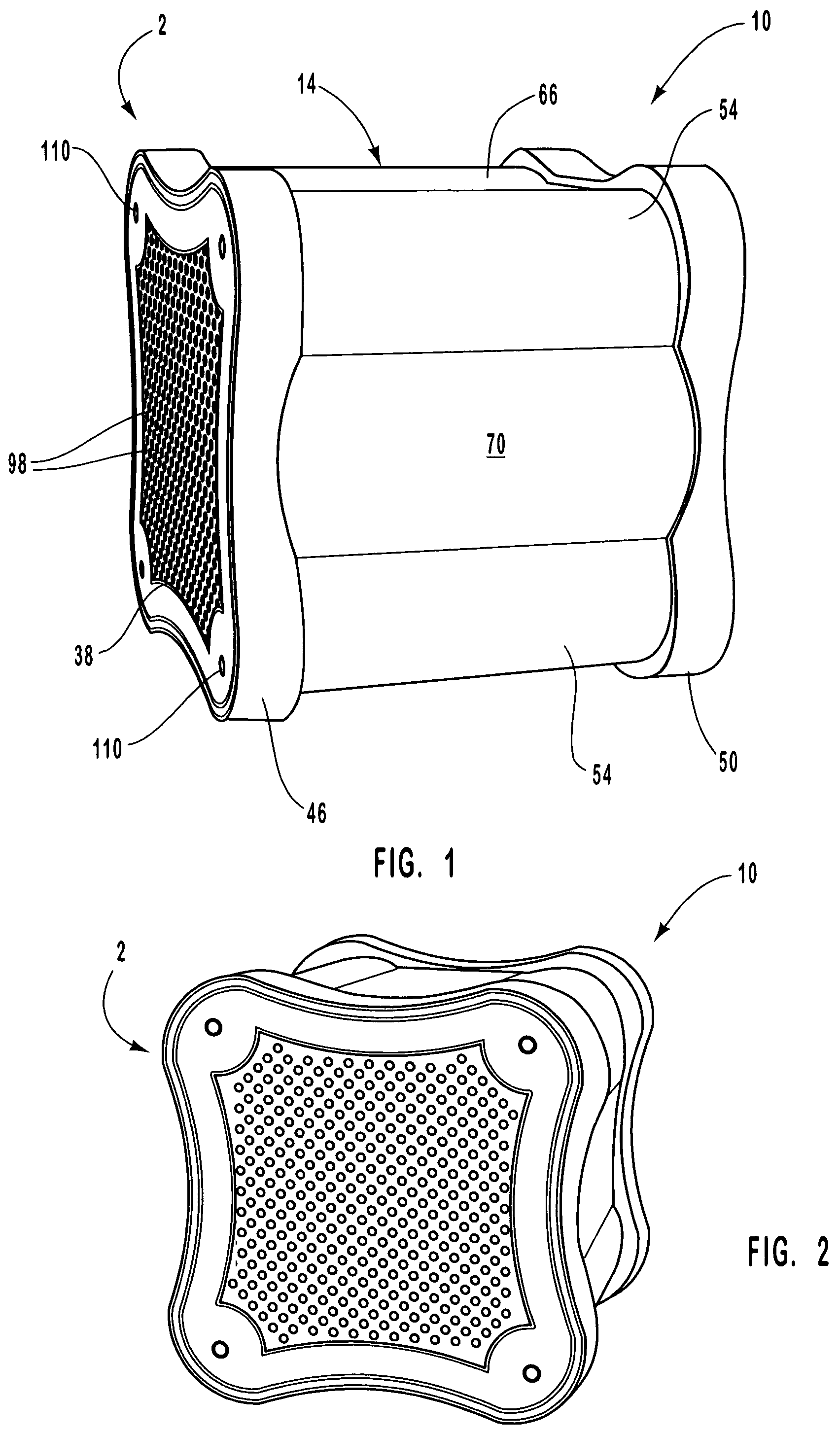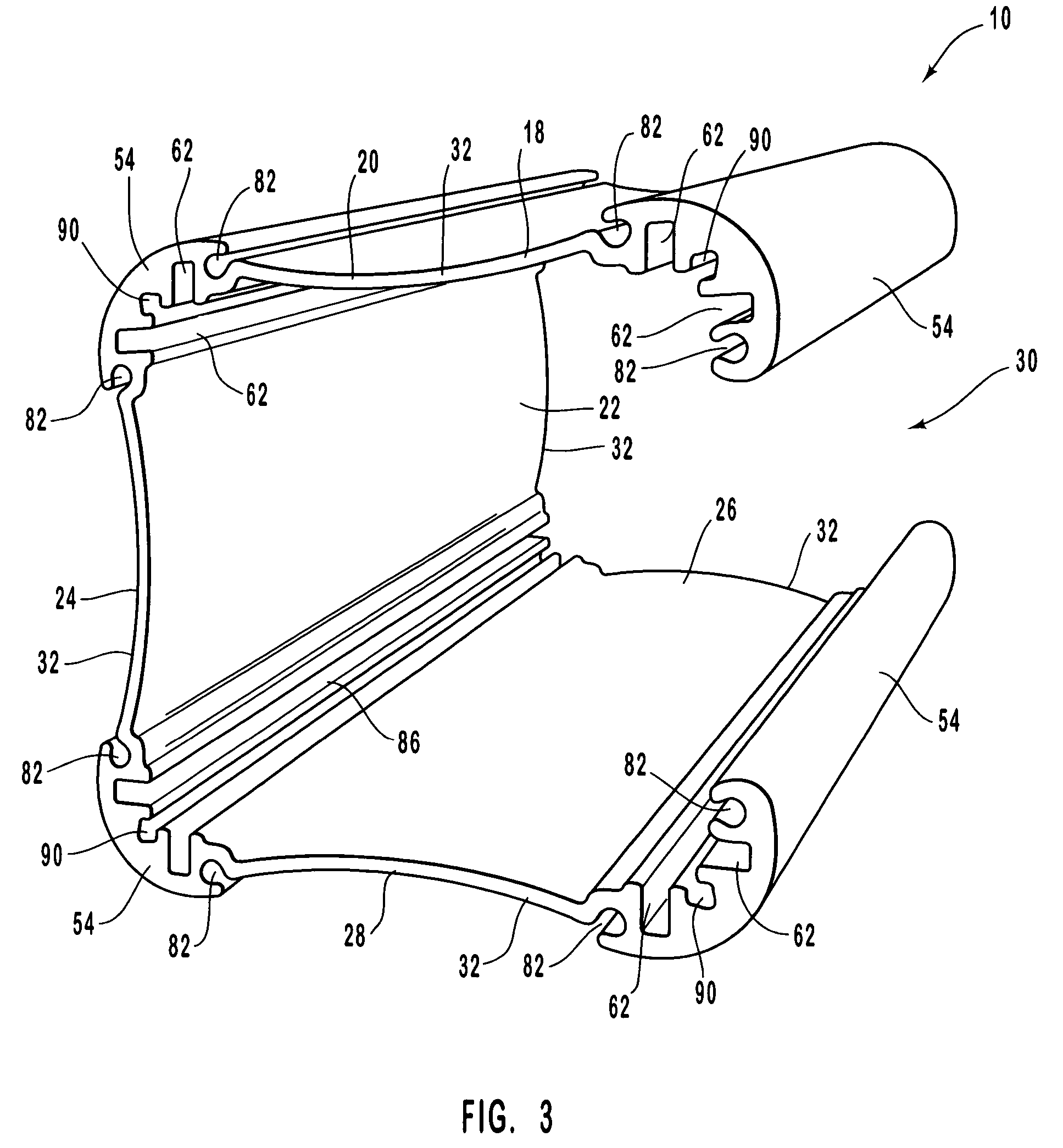Non-peripherals processing control module having improved heat dissipating properties
a technology of heat dissipation control and non-peripheral, which is applied in the direction of cooling/ventilation/heating modifications, electrical apparatus casings/cabinets/drawers, sound cards, etc., can solve the problems that the large, bulky encasement modules that support processing and other components have not been shed, and the small, powerful modern systems in use today are virtually incomparable to their ancestral counterparts, etc., to achieve the effect of improving the overall computing power, the effect of improving
- Summary
- Abstract
- Description
- Claims
- Application Information
AI Technical Summary
Benefits of technology
Problems solved by technology
Method used
Image
Examples
Embodiment Construction
[0039]It will be readily understood that the components of the present invention, as generally described and illustrated in the figures herein, could be arranged and designed in a wide variety of different configurations. Thus, the following more detailed description of the embodiments of the system and method of the present invention, and represented in FIGS. 1 through 14-B, is not intended to limit the scope of the invention, as claimed, but is merely representative of the presently preferred embodiments of the invention.
[0040]The presently preferred embodiments of the invention will be best understood by reference to the drawings wherein like parts are designated by like numerals throughout.
[0041]The present invention describes a method and system for providing a unique and proprietary non-peripherals-based processing control unit and the encasement module utilized to house or embody the various circuitry and other computer components within the proprietary non-peripherals-based ...
PUM
 Login to View More
Login to View More Abstract
Description
Claims
Application Information
 Login to View More
Login to View More - R&D
- Intellectual Property
- Life Sciences
- Materials
- Tech Scout
- Unparalleled Data Quality
- Higher Quality Content
- 60% Fewer Hallucinations
Browse by: Latest US Patents, China's latest patents, Technical Efficacy Thesaurus, Application Domain, Technology Topic, Popular Technical Reports.
© 2025 PatSnap. All rights reserved.Legal|Privacy policy|Modern Slavery Act Transparency Statement|Sitemap|About US| Contact US: help@patsnap.com



